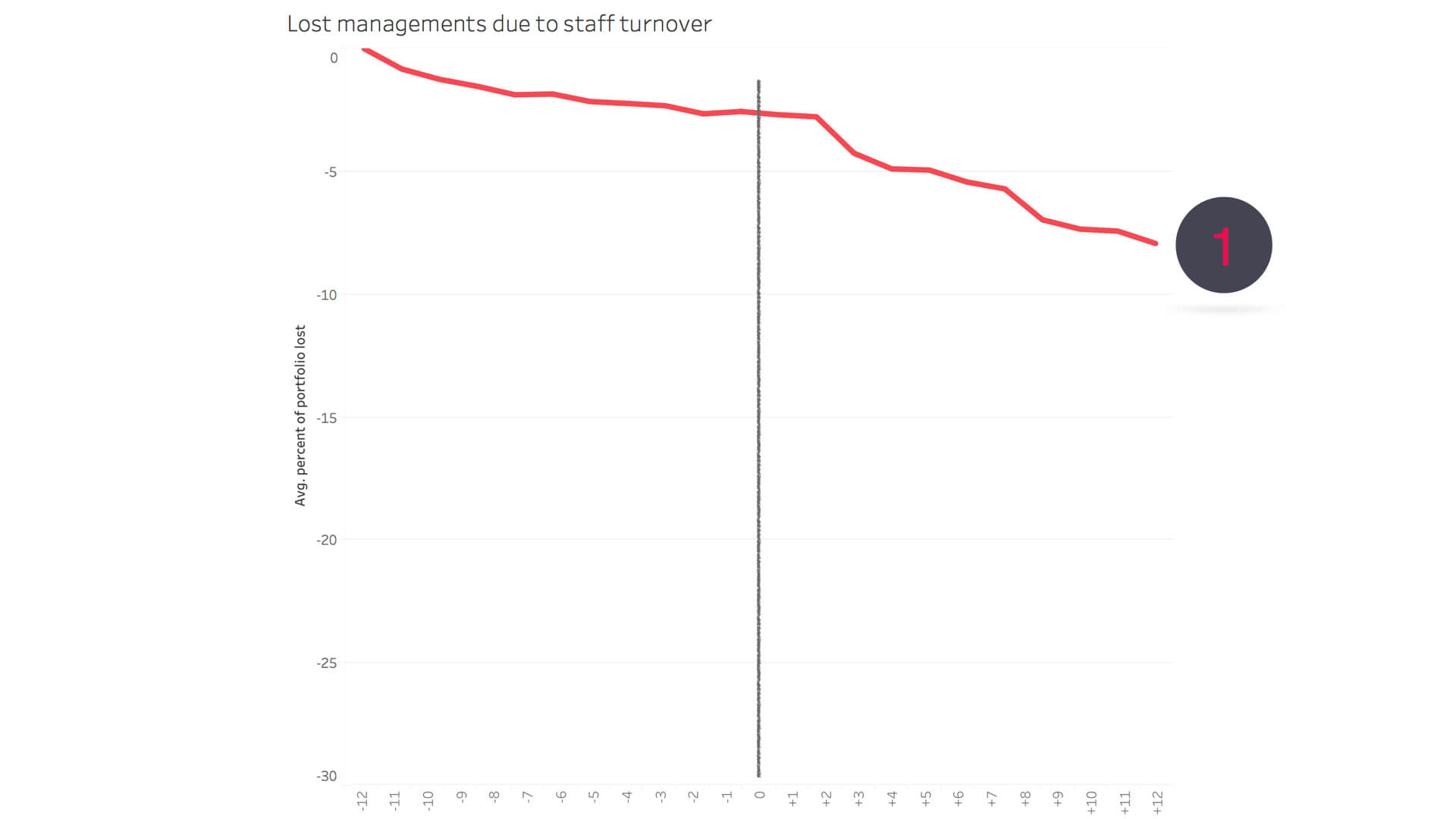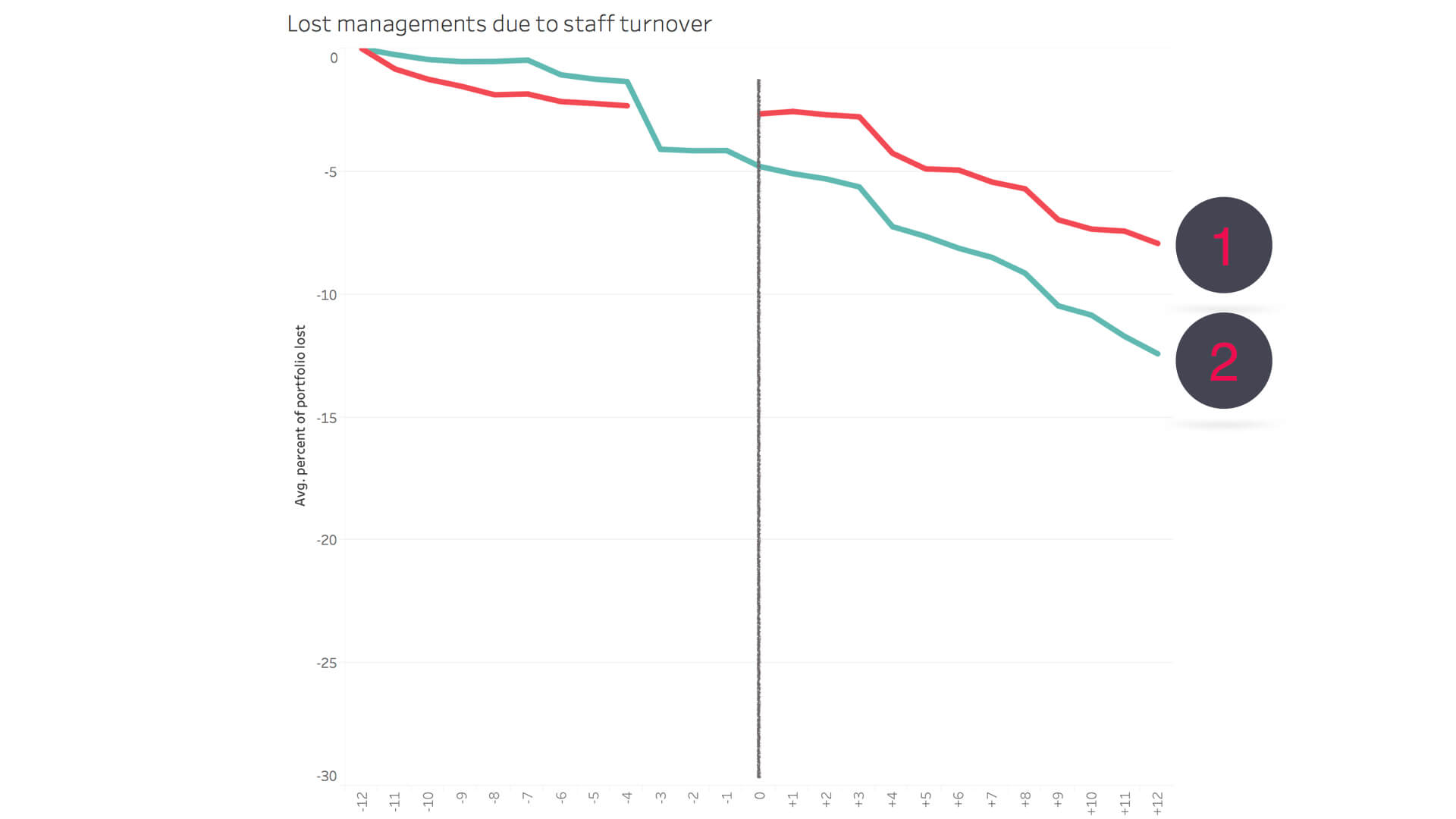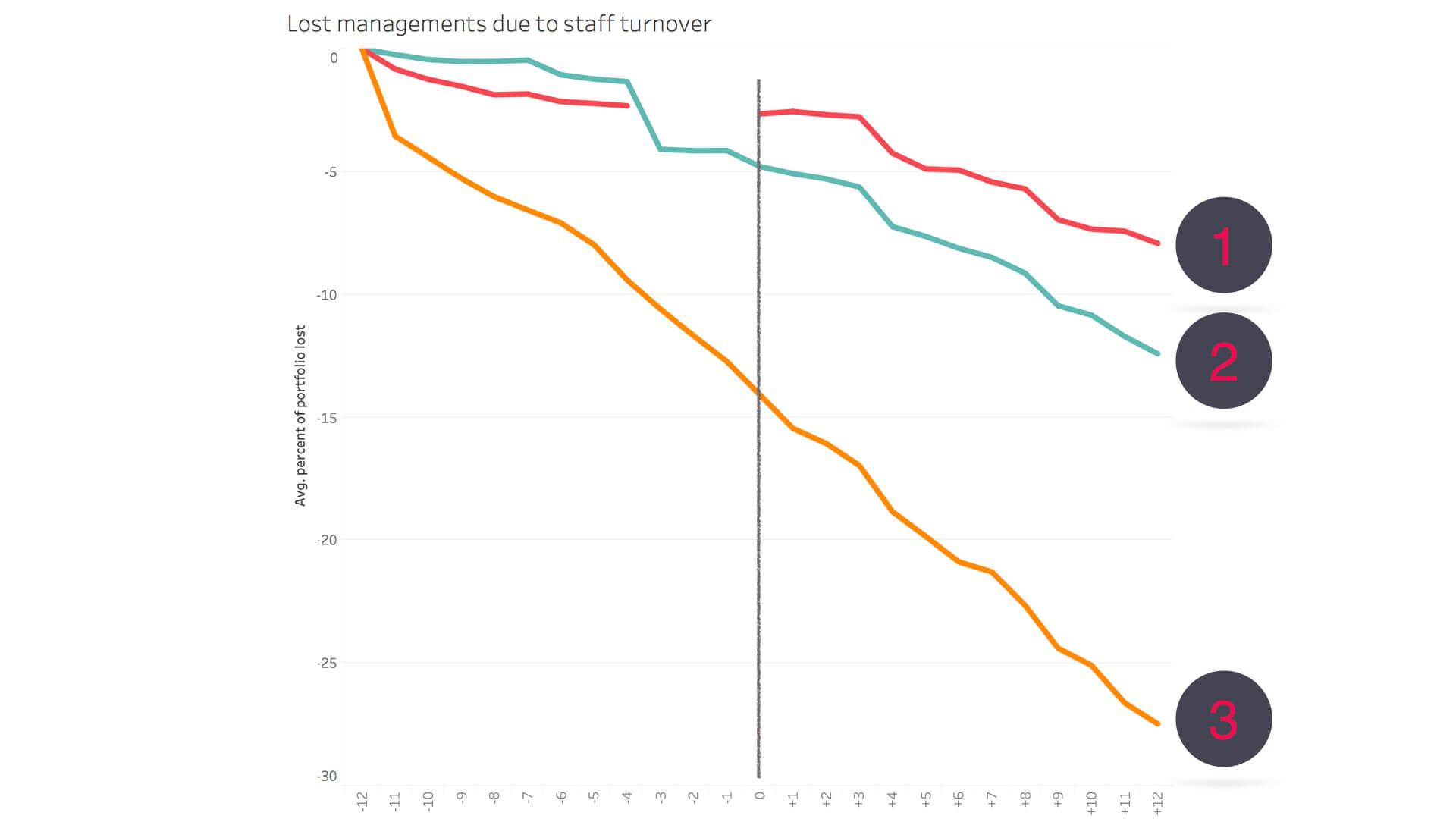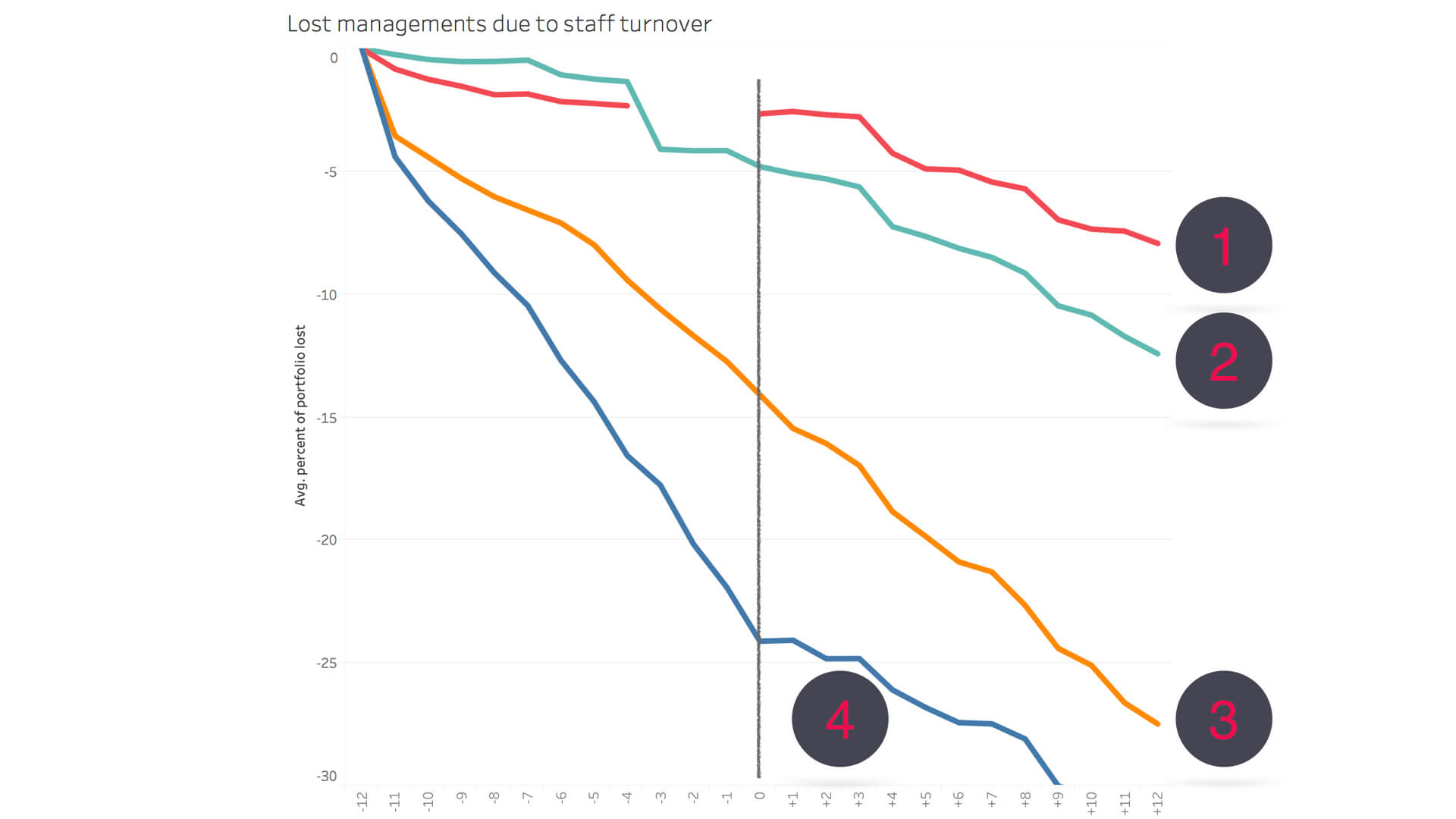What if we told you that every property manager that leaves your agency reduces the business asset value by 20 managements and around $100,000?
Sounds alarming right? These troubling figures are sure to make you think differently about retention of your property management talent.
We recently conducted research into one of the biggest factors impacting profitability at property management agencies. Armed with new data from Ailo, our business data component (formerly known as Apmasphere), we found some intriguing results.
The key insight:
For every property manager who leaves, the agency will lose at least 20 managements. This equates to about $30,000 in lost income and around $100,000 in lost asset value.
All because of one staff member leaving.
To fully comprehend this trend we created four different landlords segments and assessed their response to a staff member leaving for twelve month period. These are the groups:
Group 1: Landlords who have never worked with the exiting property manager and have only worked with one property manager during their time with the agency. (This is the control group)
Group 2: Landlords who have never worked with the exiting property manager, but have worked with a couple of different property managers in the agency.
Now, for the ones that did work with the property manager that is leaving.
Group 3: Landlords who worked with the exiting property manager but were handed off to a new property manager in the months before the first property manager left. They had time to do a warm handover.
Group 4: Landlords who worked with the property manager and have had no handoff. The property manager leaves and the property is immediately reassigned. There is no time to do a handoff, and so the file is passed cold to the new property manager.
So, what do those groups reveal?
Here’s what happens to the first group of landlords. These landlords have always just had the one property manager, and that property manager is still there.

You see a small loss rate, but probably just the rate you’d expect to see over time.
Let’s look at the second group of landlords. These landlords do not work with the property manager exiting, but have had a number of different property managers over the years.

These have a slightly higher loss rate. Clearly there is a reverberation from exiting staff throughout the business, causing some landlords to be knocked loose, particularly those that have already gone through a few property managers.
This effect is still seen a year out.
OK, what about the third group? These are landlords that worked with the property manager in the year before the property manager left, but during that time have been reassigned to other property managers.

In this case, the loss rate is much higher. These are landlords that are going through change and are frustrated with the process, even though there has been a warm handoff from the departing property manager to their new one. They are much more likely to leave, and that continues for a year after the person has left.
Lastly, the fourth group. These are the landlords who are managed by the departing property manager right up to the point the property manager leaves. There is no time to do a warm handover, and so the new property manager picks up the file cold.

In this case, the numbers are devastating. Over 1 in 3 managements that go through a cold transition will leave the agency. The effect is felt for a year.
What does all of that mean?
First, the most significant controllable driver of lost managements is your staff turnover. Staff turnover does not explain all lost business, but it is the biggest driver that you have control over. That means that the largest driver of success in an agency is its culture.
Second if a staff member is going to leave, it is imperative to conduct a warm handover instead of a cold handover. After all, we are in a service economy, our core service depends on our team and that means that the service offered to clients are essentially products of our cultures.
In all, culture will trump any other effort over time and that is where we need to focus our time and energy. We must shift beyond the standard narrow focus on policies and procedures and think more about what we are trying to achieve, how we create value, and how we want to work together.